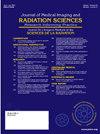Medical imaging privacy: A systematic scoping review of key parameters in dataset construction and data protection
IF 1.3
Q3 RADIOLOGY, NUCLEAR MEDICINE & MEDICAL IMAGING
Journal of Medical Imaging and Radiation Sciences
Pub Date : 2025-04-26
DOI:10.1016/j.jmir.2025.101914
引用次数: 0
Abstract
Background
With digitalization in the field of healthcare, using patient image based data, there is also increasing concerns on protection of patient privacy. Globally various legal rules and regulations have been adopted for stringent measures on data privacy. However, despite the growing importance of privacy, there are currently no universally defined protocols outlining the specific parameters for the de-identification/pseudo-anonymization of medical images.
Objectives
The study aims to assess current methods for protecting patient privacy in medical image datasets used in research and healthcare technology development.
Methods
A comprehensive, systematic search was conducted with a defined search string across databases, including PubMed/Medline, Scopus, Web of Science, Embase, and Google Scholar. Studies were selected based on their focus on the procedures used for anonymization, pseudo-anonymization, and de-identification of medical images during the creation of datasets.
Results
From an initial pool of 324 potentially relevant articles, 13 studies were ultimately included in the final review after meeting the inclusion criteria. Of these, the majority focused on open-source datasets, which are accessible for use in research and algorithm development. Methods of de-identification of images included burn-in annotation, defacing processes, removal of DICOM tags, and facial de-identification. A medical image protection checklist was created based on the findings of our review.
Discussion
The review explores techniques such as removal or masking of personal identifiers, DICOM tag removal, facial de-identification
Goal
The insights gathered aim to help develop standardized privacy protocols to be adhered by healthcare professionals for responsible use of medical imaging data, ensuring the responsible use of medical imaging data for healthcare advancements.
Conclusion
The findings of this review highlight several key considerations for effective pseudo-anonymization and de-identification of medical images. The review emphasizes the need for a careful balance between protecting patient privacy and ensuring that medical datasets retain sufficient quality and richness for research and technological development.
医学成像隐私:数据集构建和数据保护关键参数的系统范围审查
随着医疗保健领域的数字化,使用基于患者图像的数据,对患者隐私的保护也越来越受到关注。全球已经通过了各种法律规则和条例,对数据隐私采取了严格的措施。然而,尽管隐私越来越重要,但目前还没有普遍定义的协议概述医学图像的去识别/伪匿名化的具体参数。目的本研究旨在评估目前用于研究和医疗保健技术开发的医学图像数据集中保护患者隐私的方法。方法在PubMed/Medline、Scopus、Web of Science、Embase、谷歌Scholar等数据库中,使用已定义的检索字符串进行全面、系统的检索。研究的选择是基于它们在创建数据集期间对医学图像进行匿名化、伪匿名化和去识别化的过程的重点。结果从最初的324篇可能相关的文章中,13篇研究在符合纳入标准后最终被纳入最终综述。其中,大多数集中于开源数据集,这些数据集可用于研究和算法开发。图像去识别的方法包括刻录注释、污损处理、去除DICOM标签和面部去识别。基于我们综述的发现,我们创建了一份医学图像保护清单。讨论本综述探讨了诸如个人标识符的去除或屏蔽、DICOM标签去除、面部去识别等技术。目标收集的见解旨在帮助制定医疗保健专业人员遵守的标准化隐私协议,以负责任地使用医疗成像数据,确保负责任地使用医疗成像数据以促进医疗保健进步。结论本综述的研究结果强调了有效的伪匿名化和去识别医学图像的几个关键考虑因素。该审查强调需要在保护患者隐私和确保医疗数据集保持足够的质量和丰富性以供研究和技术发展之间取得谨慎的平衡。
本文章由计算机程序翻译,如有差异,请以英文原文为准。
求助全文
约1分钟内获得全文
求助全文
来源期刊

Journal of Medical Imaging and Radiation Sciences
RADIOLOGY, NUCLEAR MEDICINE & MEDICAL IMAGING-
CiteScore
2.30
自引率
11.10%
发文量
231
审稿时长
53 days
期刊介绍:
Journal of Medical Imaging and Radiation Sciences is the official peer-reviewed journal of the Canadian Association of Medical Radiation Technologists. This journal is published four times a year and is circulated to approximately 11,000 medical radiation technologists, libraries and radiology departments throughout Canada, the United States and overseas. The Journal publishes articles on recent research, new technology and techniques, professional practices, technologists viewpoints as well as relevant book reviews.
 求助内容:
求助内容: 应助结果提醒方式:
应助结果提醒方式:


